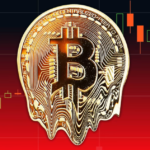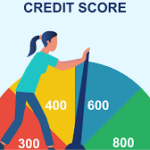Introduction
A game event under GrowthGameLine is more than a time-limited mission or a seasonal feature it’s a strategic tool designed to engage players, boost retention, and expand community interaction. In today’s fast-paced gaming market, content updates and live operations play a key role in long-term game success.
This article breaks down the process of creating, managing, and optimizing a game event under GrowthGameLine, offering developers a clear roadmap to elevate player engagement and growth.
What Is GrowthGameLine?
GrowthGameLine is a structured development and publishing strategy that focuses on long-term user growth, retention, and monetization through recurring content updates and event-based engagement. Every game event under GrowthGameLine is designed with clear goals, measured execution, and repeatable impact.
GrowthGameLine supports:
- Continuous live content
- Event-driven user acquisition
- Data-based progression systems
- Player lifecycle engagement
The Purpose of Game Events Under GrowthGameLine
A game event under GrowthGameLine serves multiple functions:
- Keeps the gameplay loop fresh
- Encourages daily logins
- Creates social momentum and community buzz
- Promotes monetization through exclusive rewards
- Offers data on player behavior and preferences
Types of Game Events Under GrowthGameLine
1. Seasonal Campaigns
Time-based events linked to holidays or global events. Examples include:
- Winter festivals
- Anniversary celebrations
- Summer challenges
These events often introduce temporary skins, music, or side quests.
2. Time-Limited Goals
Short-term gameplay loops meant to:
- Increase short-session play
- Offer simple, attractive rewards
- Drive logins and actions over 3–7 days
3. Leaderboard Competitions
Competitive formats that rank player performance:
- Solo or team-based
- May include tiers and divisions
- Incentivize progression through rankings
4. Cooperative Missions
Community-wide objectives such as:
- Global resource collection
- Shared boss fights
- Progress toward unlocking new content
5. Narrative Events
These advance the storyline with cutscenes or new quests. Narrative-driven game events under GrowthGameLine increase immersion.
How to Plan a Game Event Under GrowthGameLine
To build a successful game event under GrowthGameLine, follow this roadmap:
Step 1: Define the Goal
Decide if your event will:
- Re-engage users
- Promote a feature or mechanic
- Drive purchases
- Test new content
Step 2: Know Your Players
Analyze:
- Active player levels
- Popular modes and items
- Time zones and platform data
Step 3: Build the Structure
Include:
- Entry requirements
- Rewards and milestones
- Progression systems
- Leaderboards, if applicable
Step 4: Prepare Assets and Tech
Deliver:
- Art, music, and UI
- Analytics hooks
- LiveOps tools for tuning and tracking
Step 5: Pre-Event Marketing
Use:
- In-game announcements
- Push notifications
- Community teasers
Timeline for a Game Event Under GrowthGameLine
| Phase | Duration | Activities |
| Planning | 2–3 weeks | Goal setting, design, asset list |
| Development | 1–2 weeks | Coding, UI/UX, balancing |
| Internal Testing | 3–5 days | QA, bug fixes, playtesting |
| Promotion Phase | 5–7 days | Social media, banners, forum posts |
| Live Event | 7–14 days | Live monitoring and player support |
| Post-Event Review | 2–4 days | KPI tracking, feedback collection |
Components of a GrowthGameLine Event
Every game event under GrowthGameLine should include:
- A clear entry point in the game menu or UI
- Event-specific visuals to set the tone
- Defined goals and mechanics (daily tasks, cumulative points, stages)
- A progression system with real-time feedback
- An end-of-event wrap-up with rewards and stats
Event Reward Types
Rewards must align with your game economy and player expectations. Examples include:
- Cosmetics (skins, titles, colors)
- Functional boosts (XP, resources, items)
- Currencies or tokens
- Leaderboard trophies
- Community rewards (shared unlocks for all participants)
Psychological Drivers Behind Game Events
A successful game event under GrowthGameLine uses these motivators:
- FOMO (Fear of Missing Out): Limited-time rewards
- Progress Loops: Visual milestones and stage unlocks
- Competition and Recognition: Rank, badges, or leaderboards
- Social Proof: Seeing others participate and succeed
- Completion Bias: Motivation to finish what was started
Tools for Managing Game Events
| Tool Name | Purpose | Benefit |
| Analytics Platforms | Track engagement, completion, monetization | Event tuning |
| LiveOps Systems | Adjust event content in real time | Real-time fixes |
| Notification Tools | Promote events in-game and via push | Higher awareness |
| A/B Testing Engines | Compare event versions | Optimize performance |
Monetization Within Events
Every game event under GrowthGameLine provides optional monetization layers:
- Event Passes: Premium track with better rewards
- Exclusive Bundles: Skins, boosts, and consumables
- One-time Offers: Discounted event-related items
- Progress Boosters: Speed up reward collection
Monetization should never block core content, but offer value for invested players.
Community and Support During Events
A strong community plan improves the impact of your game event under GrowthGameLine.
Best practices:
- Daily social updates
- Event-specific hashtags
- Live moderation and bug reporting
- Player spotlights and stream replays
Post-Event Feedback and Analysis
After the event ends:
- Send thank-you messages to participants
- Share event stats and results
- Run surveys or polls
- Use player behavior to adjust future content
Sample Event Formats
| Format | Description | Works Best In |
| Raid Challenge | Defeat bosses as a community | Online RPGs, Co-op games |
| Daily Quests | New objective each login | Casual, mobile, progression-based |
| Puzzle Challenge | Solve logic or timed problems | Puzzle, Strategy |
| Time Attack | Beat levels under a timer | Action, Racing |
| Crafting Contest | Gather and build items | Sandbox, Simulation |
Key Metrics to Measure Event Success
| Metric | What It Measures |
| Participation Rate | % of players who joined the event |
| Retention Boost | Return logins during or after event |
| Monetization Uplift | Purchase volume during event |
| Completion Rate | % of players who finished goals |
| Player Feedback | Quality of experience and suggestions |
Indie-Friendly Game Events Under GrowthGameLine
Indie developers can scale down GrowthGameLine for their games:
- Run weekend-only events
- Reuse assets with new rules
- Offer small but meaningful rewards
- Promote via Discord and Reddit
- Focus on community voting for next event theme
Case Study: Mini PvP Challenge in a Mobile RPG
A mobile RPG introduced a game event under GrowthGameLine focused on PvP:
- 7-day leaderboard race
- Double XP and bonus rewards for wins
- New arena map with temporary effects
Results:
- 25% increase in daily logins
- 42% of active players joined
- 13% boost in in-game purchases
Future Trends in Game Events
Upcoming enhancements for game events under GrowthGameLine:
- AI-powered personalization: Custom goals and offers
- Cross-platform sync: Event progress carries across devices
- User-generated content: Players help create event mechanics
- Interactive storytelling: Events that change game lore permanently
Key Takeaways
- A game event under GrowthGameLine is a tool for engagement, not just entertainment.
- With proper planning and support, events can re-engage players and drive growth.
- Balance content with fairness, variety, and reward quality.
- Community feedback improves future events.
- Tools like analytics, A/B testing, and LiveOps help you refine success.
Conclusion
Every game event under GrowthGameLine represents an opportunity to connect players with your game in meaningful ways. From structure and progression to feedback and rewards, each element plays a role in maximizing player satisfaction and platform success.
Whether you’re managing a mobile RPG, online shooter, or casual simulation title, applying the GrowthGameLine model will help your game evolve, engage, and grow.
Put the player first, build smart events, and let the data guide your future.
FAQs
What is a game event under GrowthGameLine?
A game event under GrowthGameLine is a structured, time-limited in-game feature designed to drive player engagement, retention, and growth through rewards, challenges, and live operations.
How do game events support player retention?
Game events offer fresh content, limited-time goals, and rewards that encourage daily logins and consistent interaction, improving overall retention.
What types of game events can be created under GrowthGameLine?
Developers can create seasonal events, leaderboard competitions, community challenges, narrative quests, and more based on player behavior and engagement goals.
Can indie developers use GrowthGameLine?
Yes, indie developers can adapt GrowthGameLine by scaling down events, reusing assets, engaging their community, and focusing on weekend or short-term events.
What metrics measure the success of a game event?
Key metrics include participation rate, retention uplift, in-game purchases during the event, task completion rates, and player feedback.






